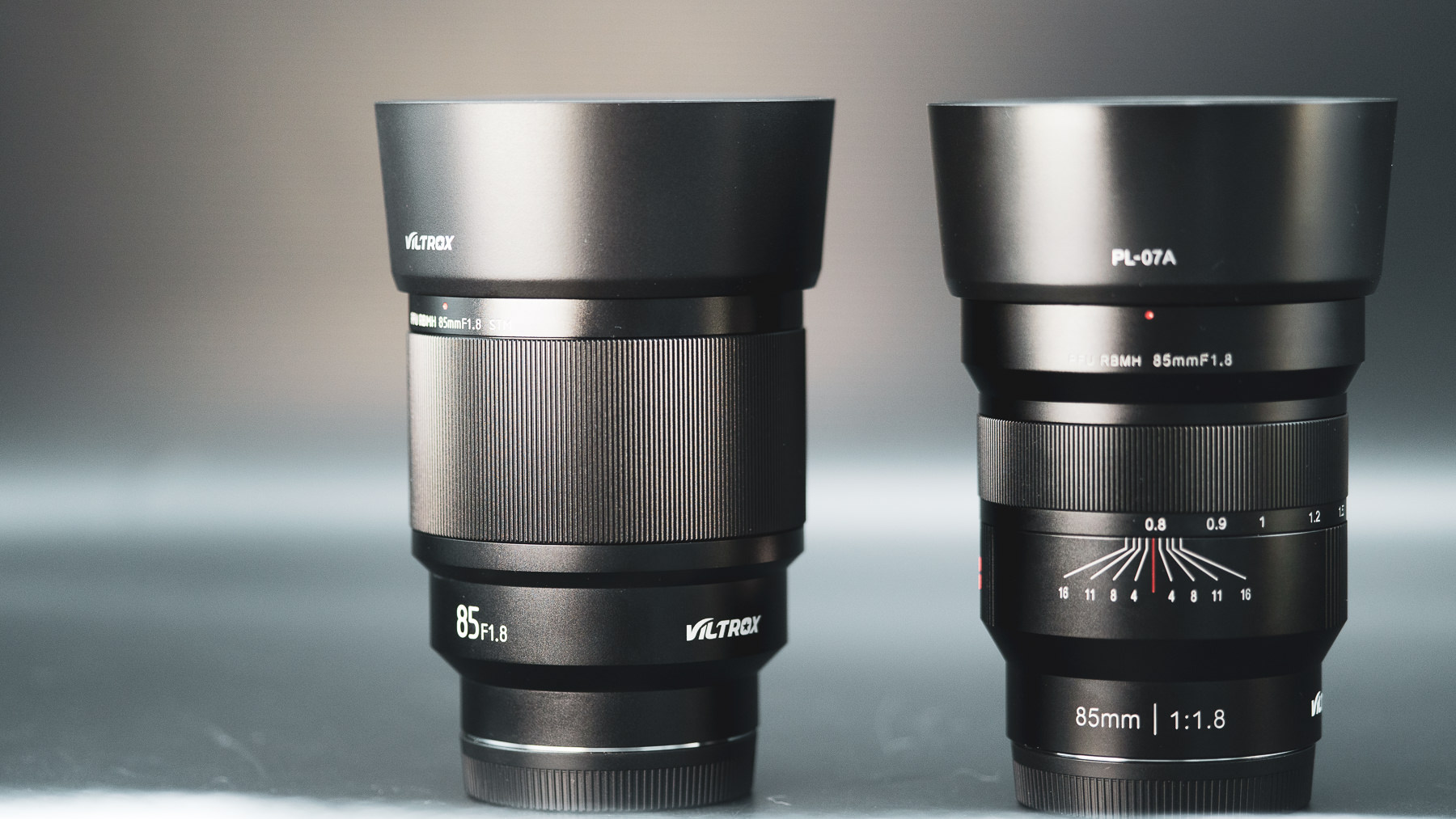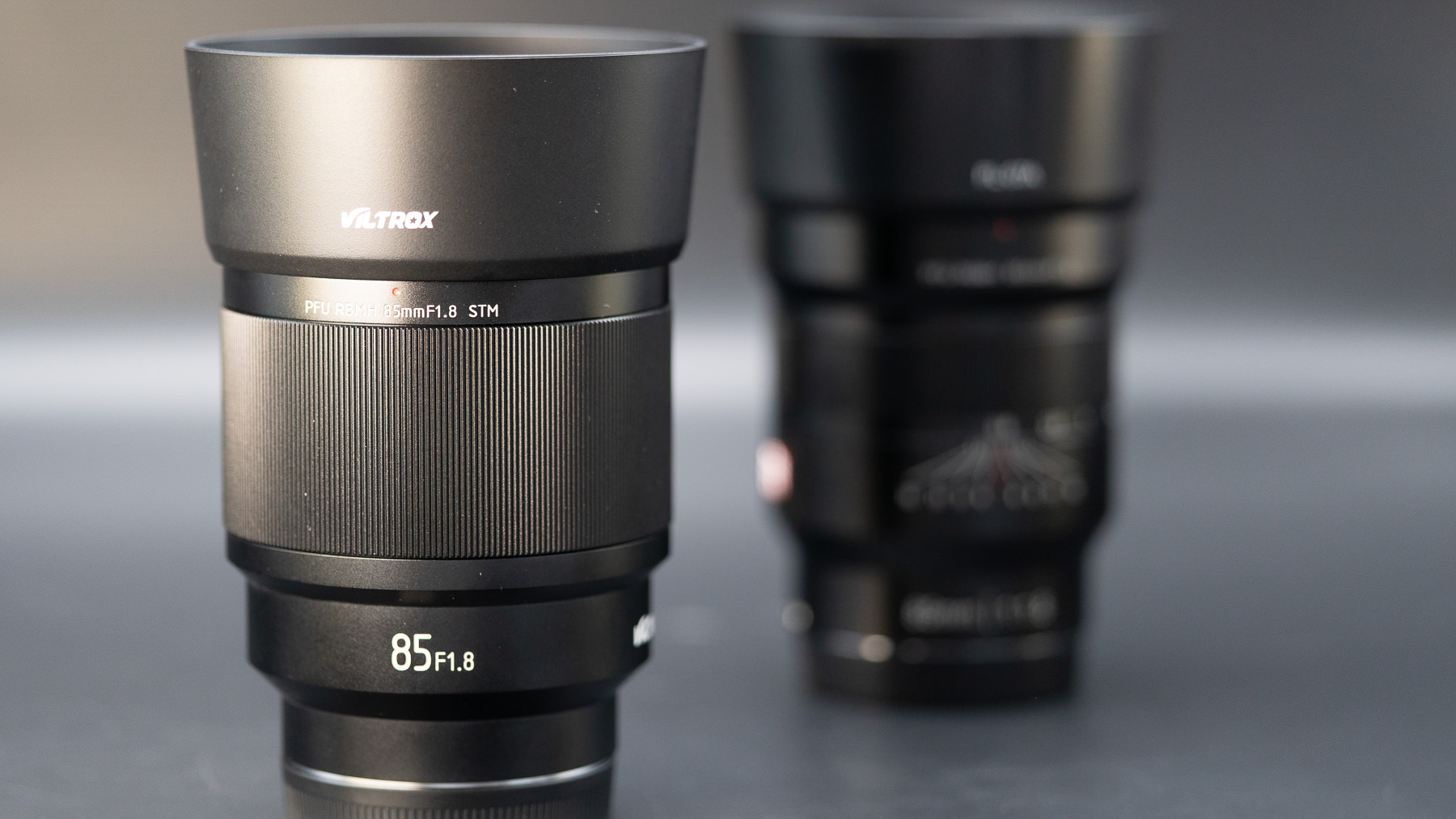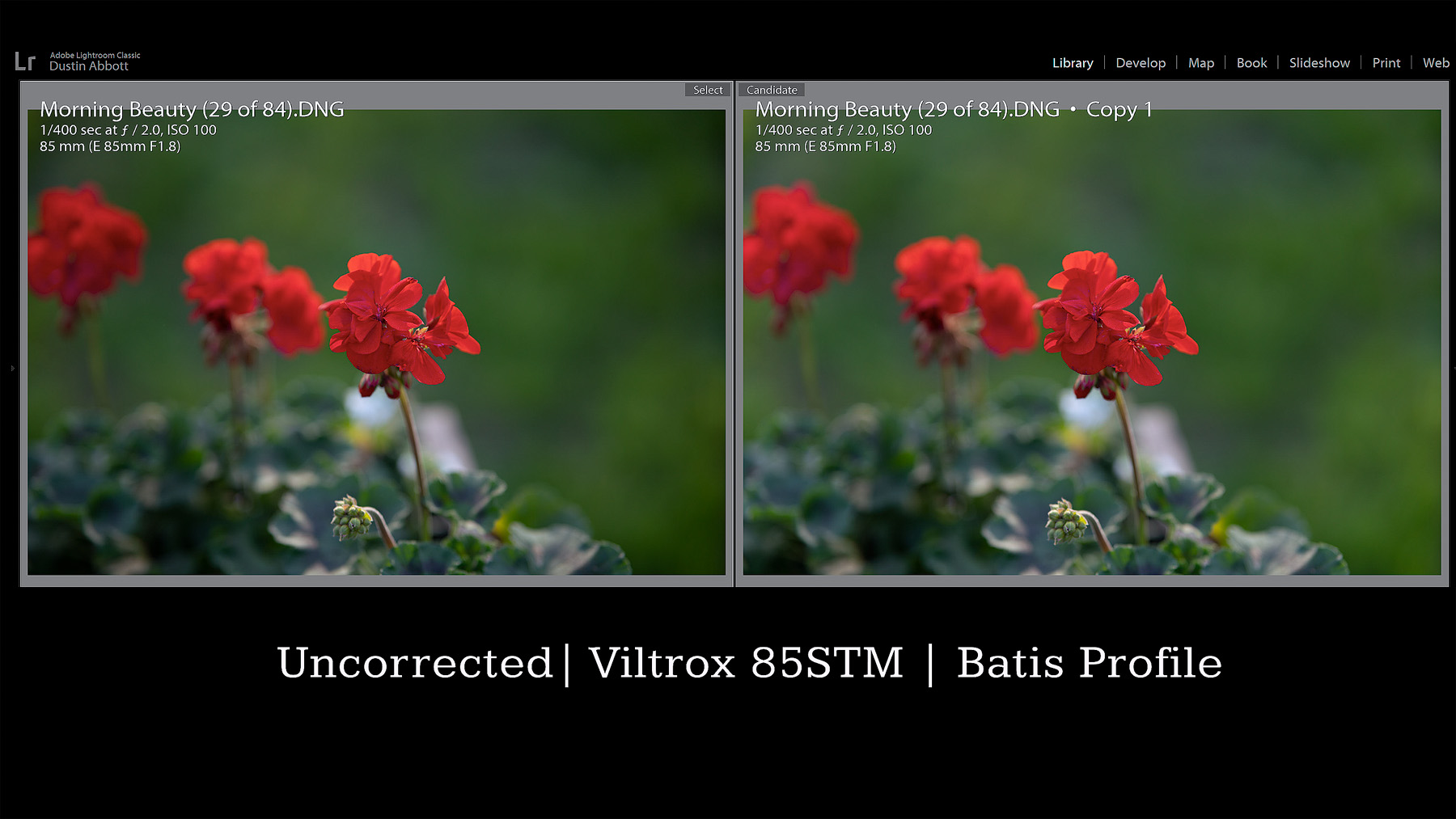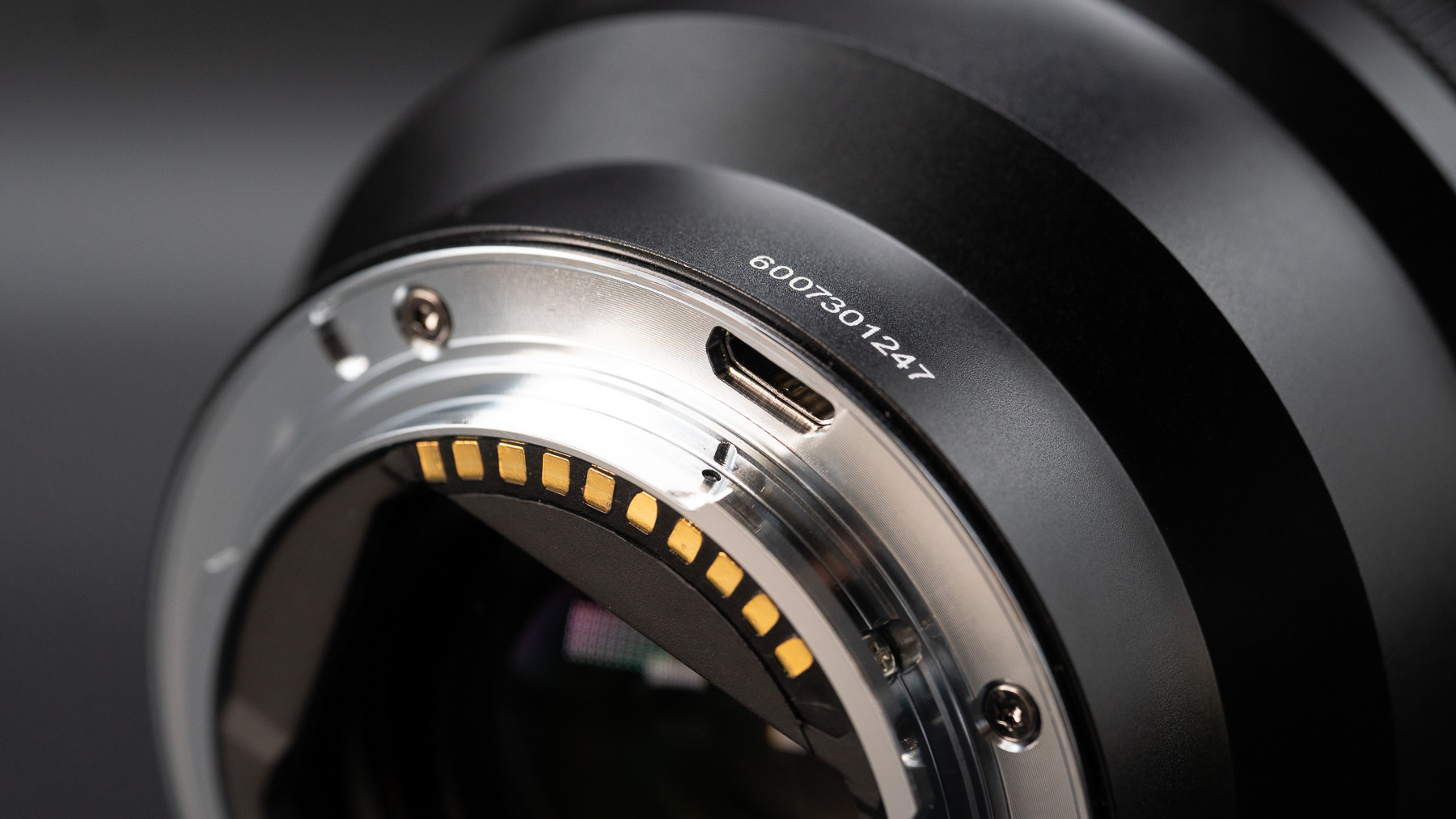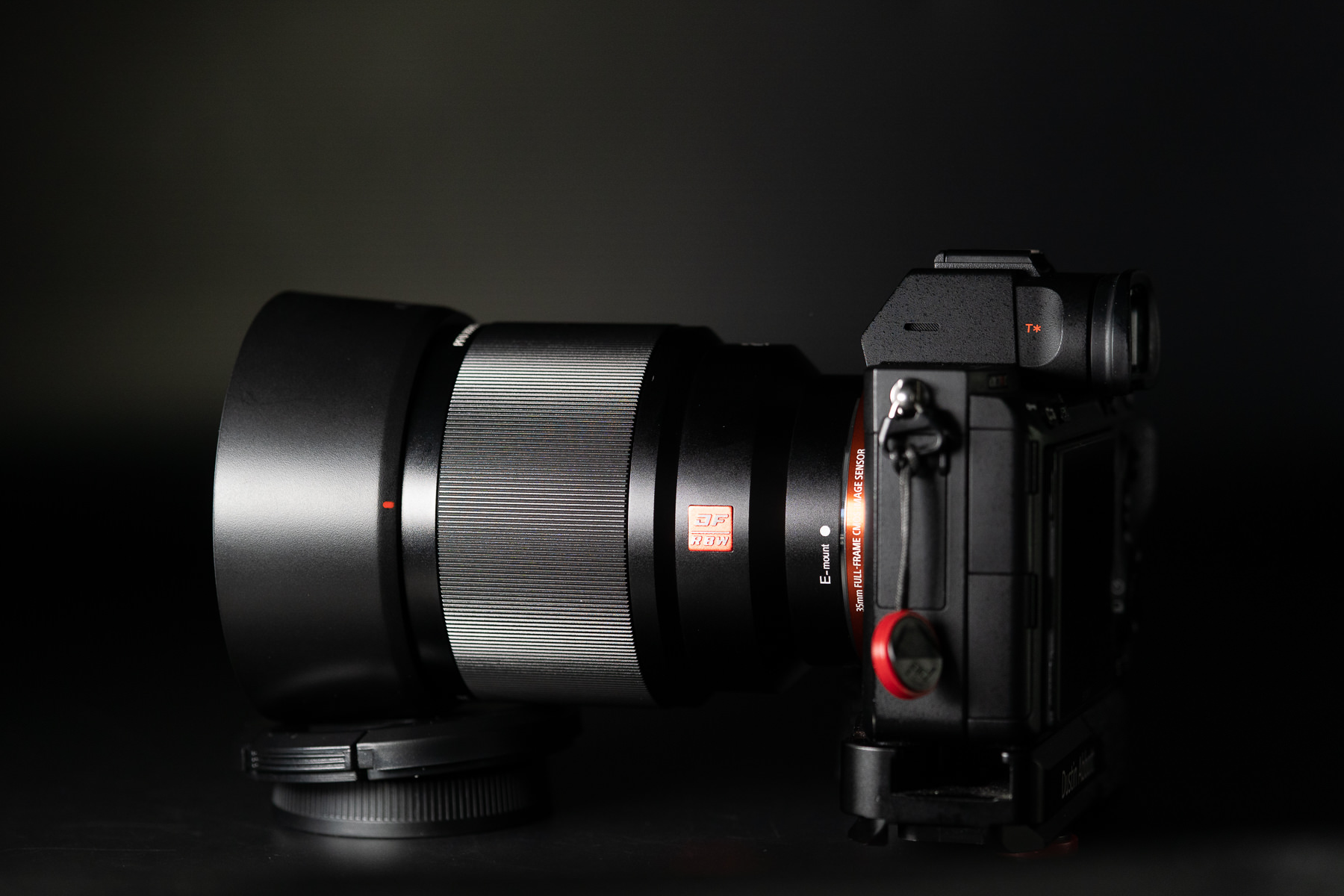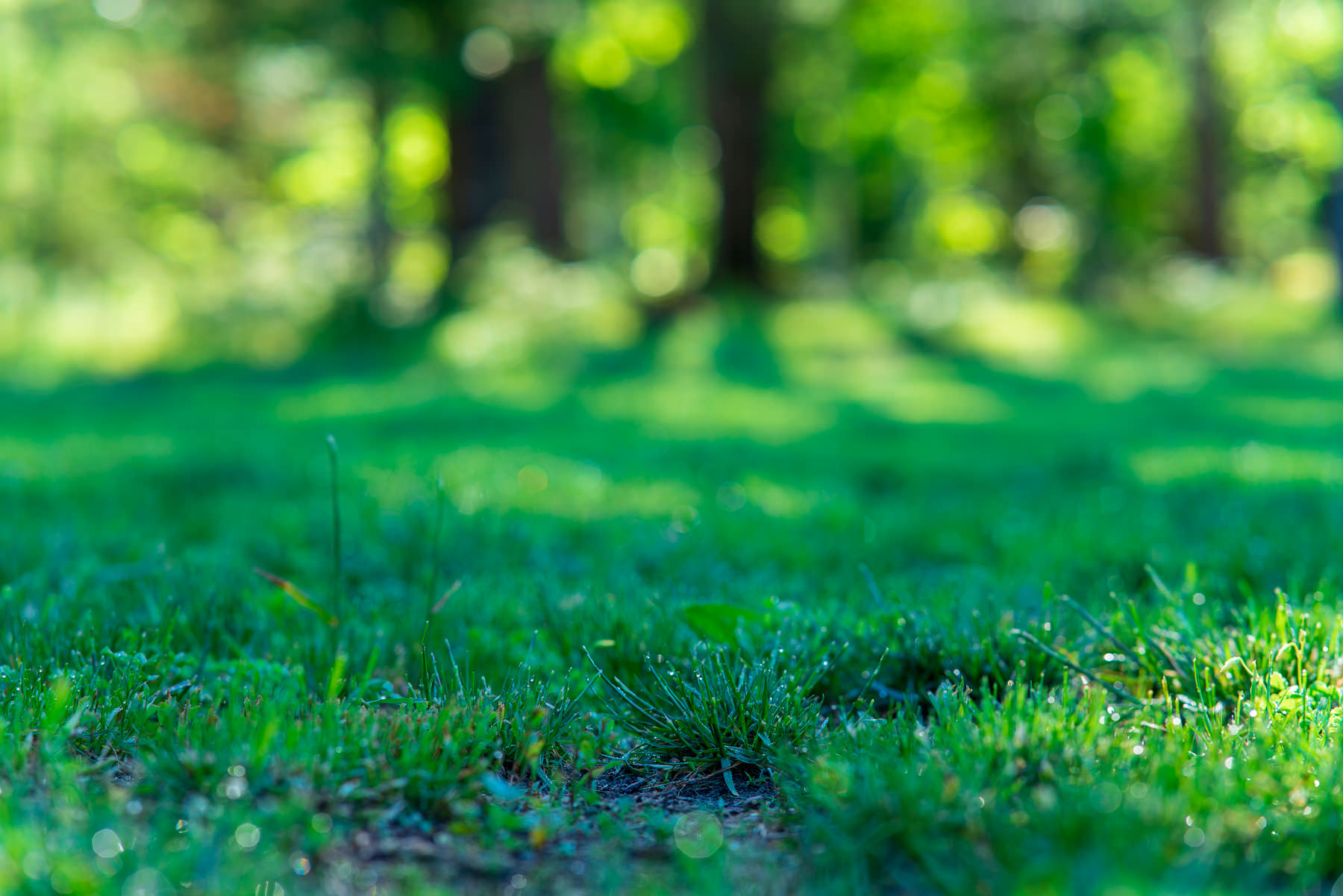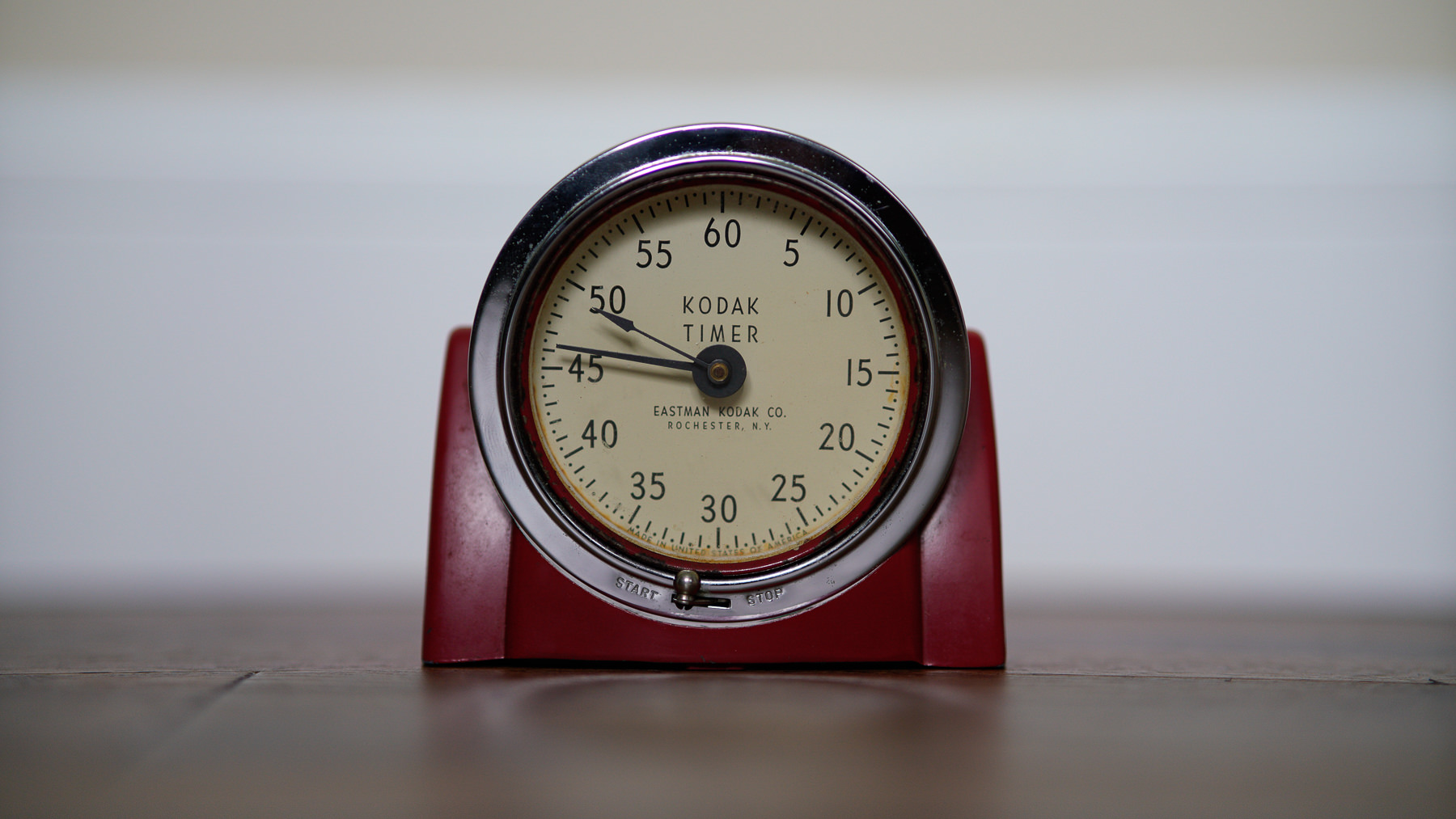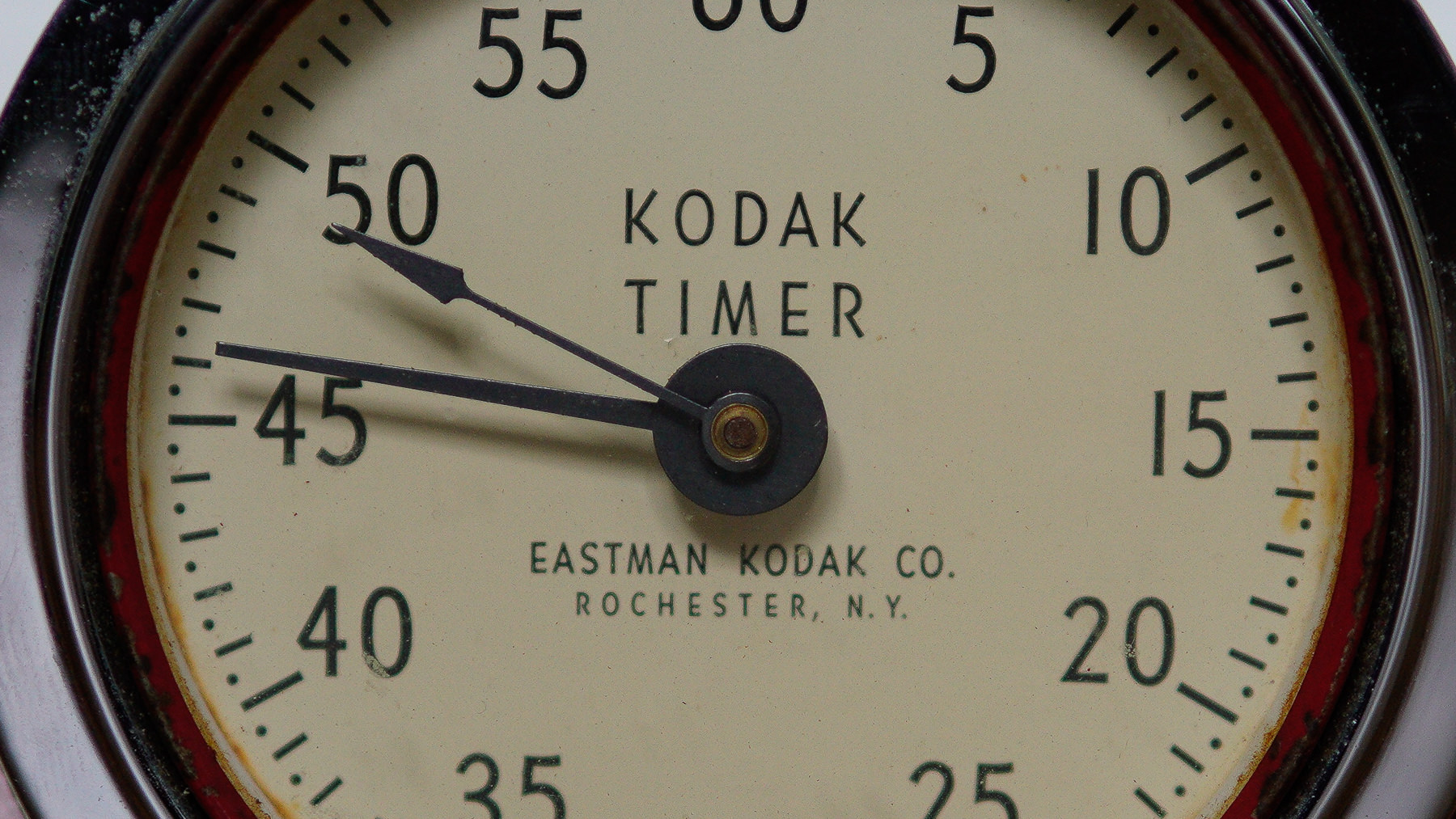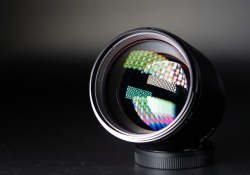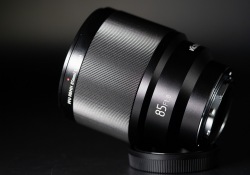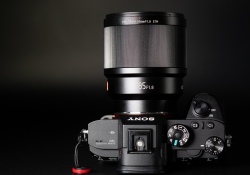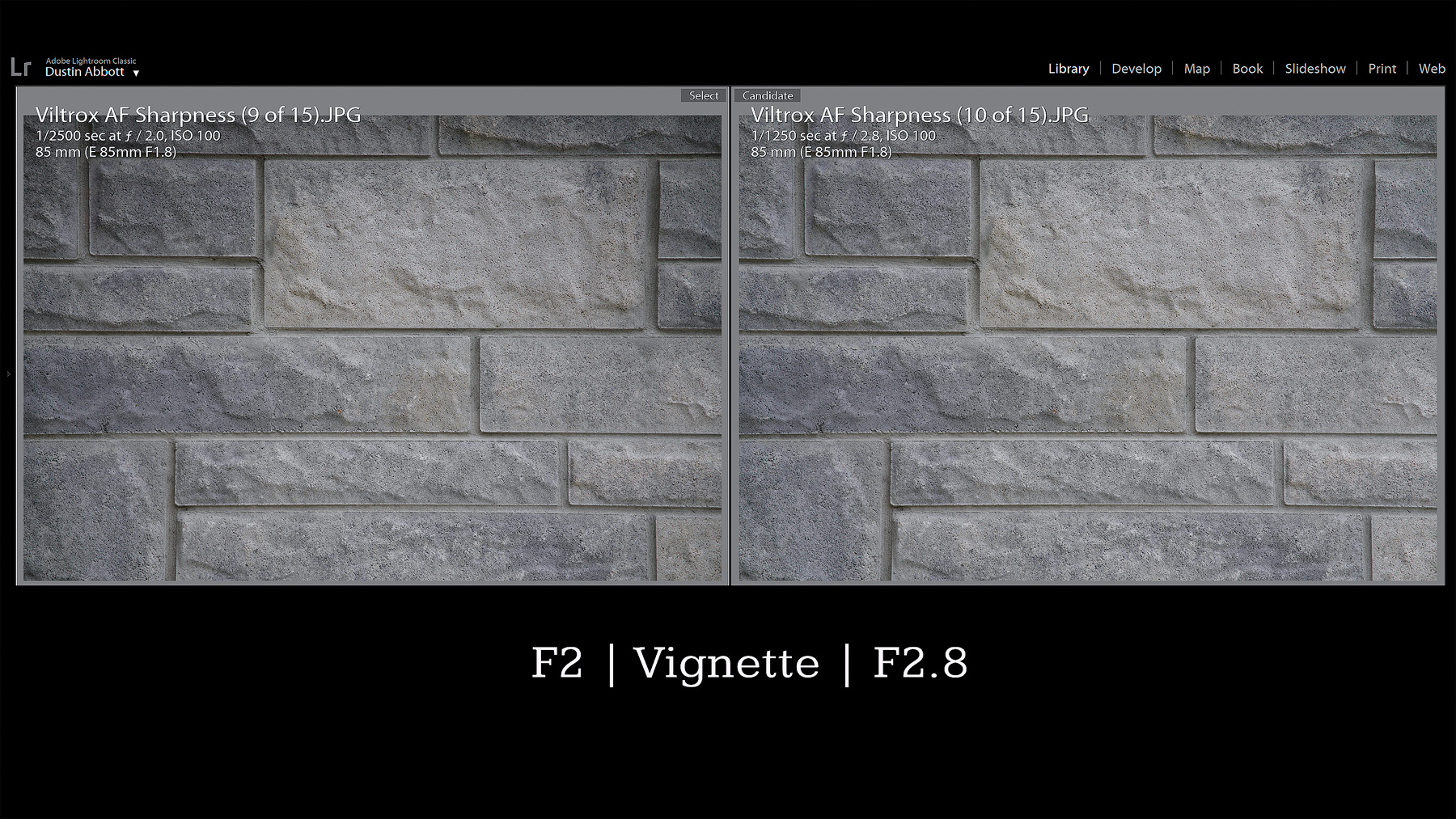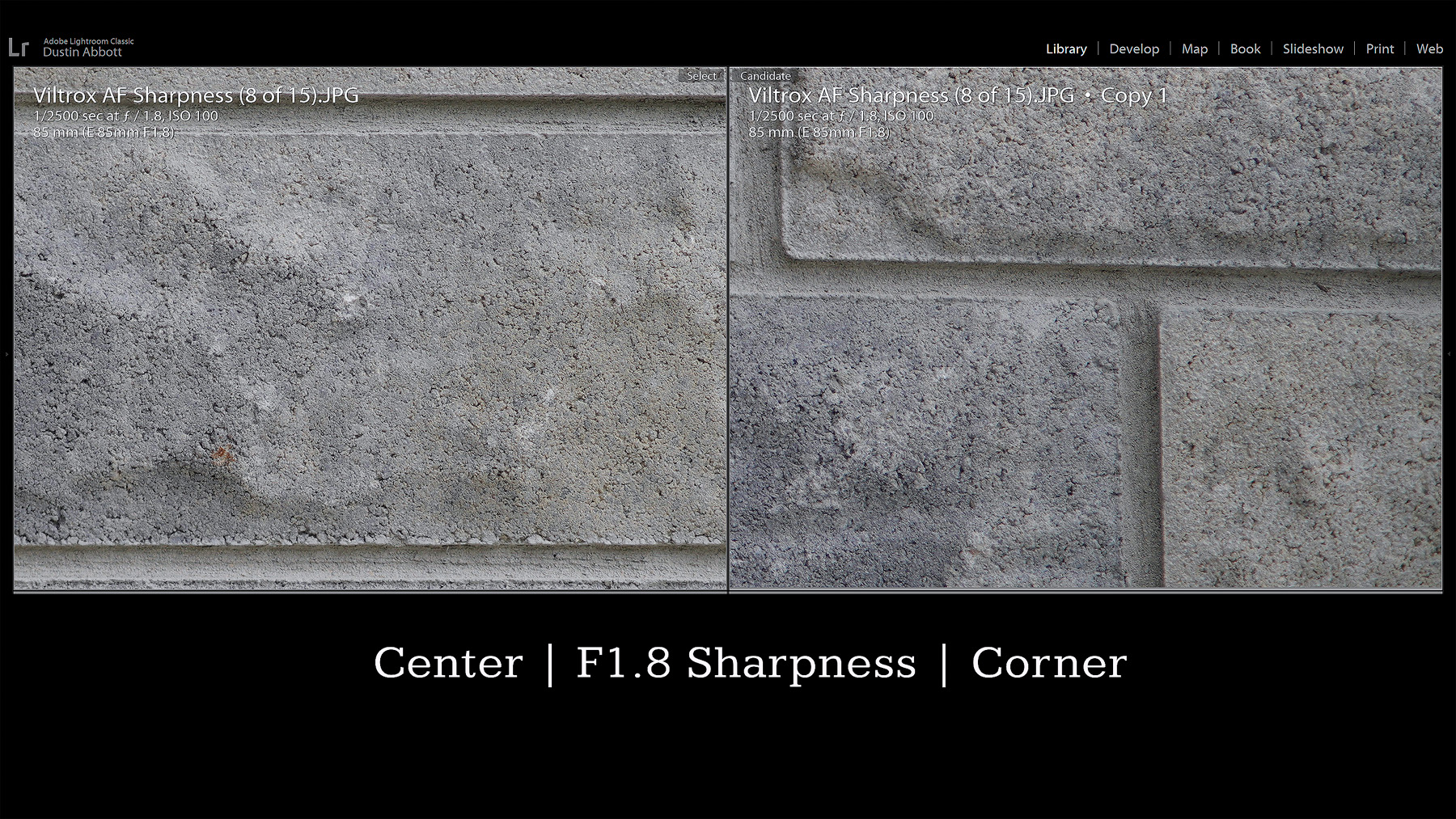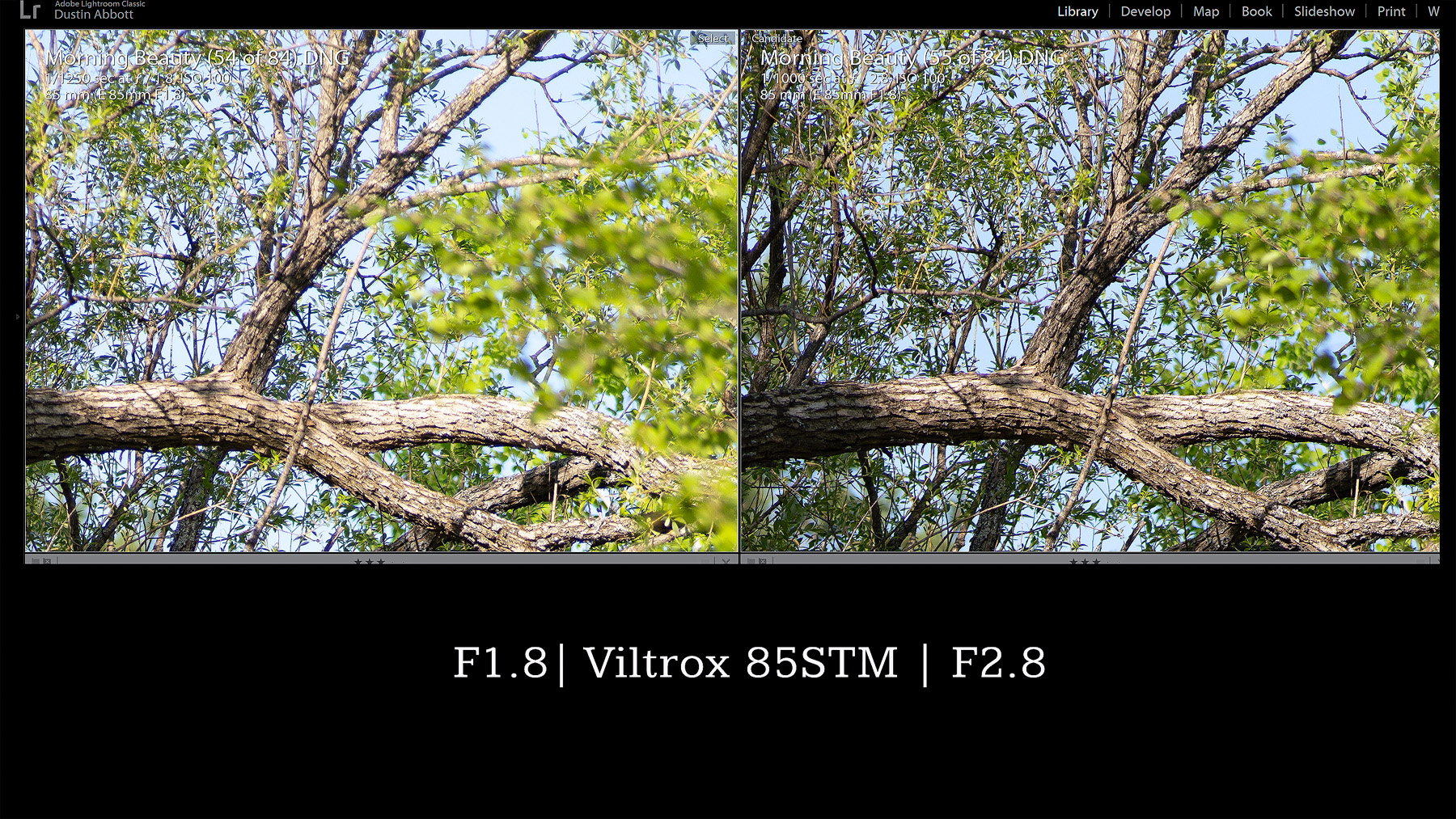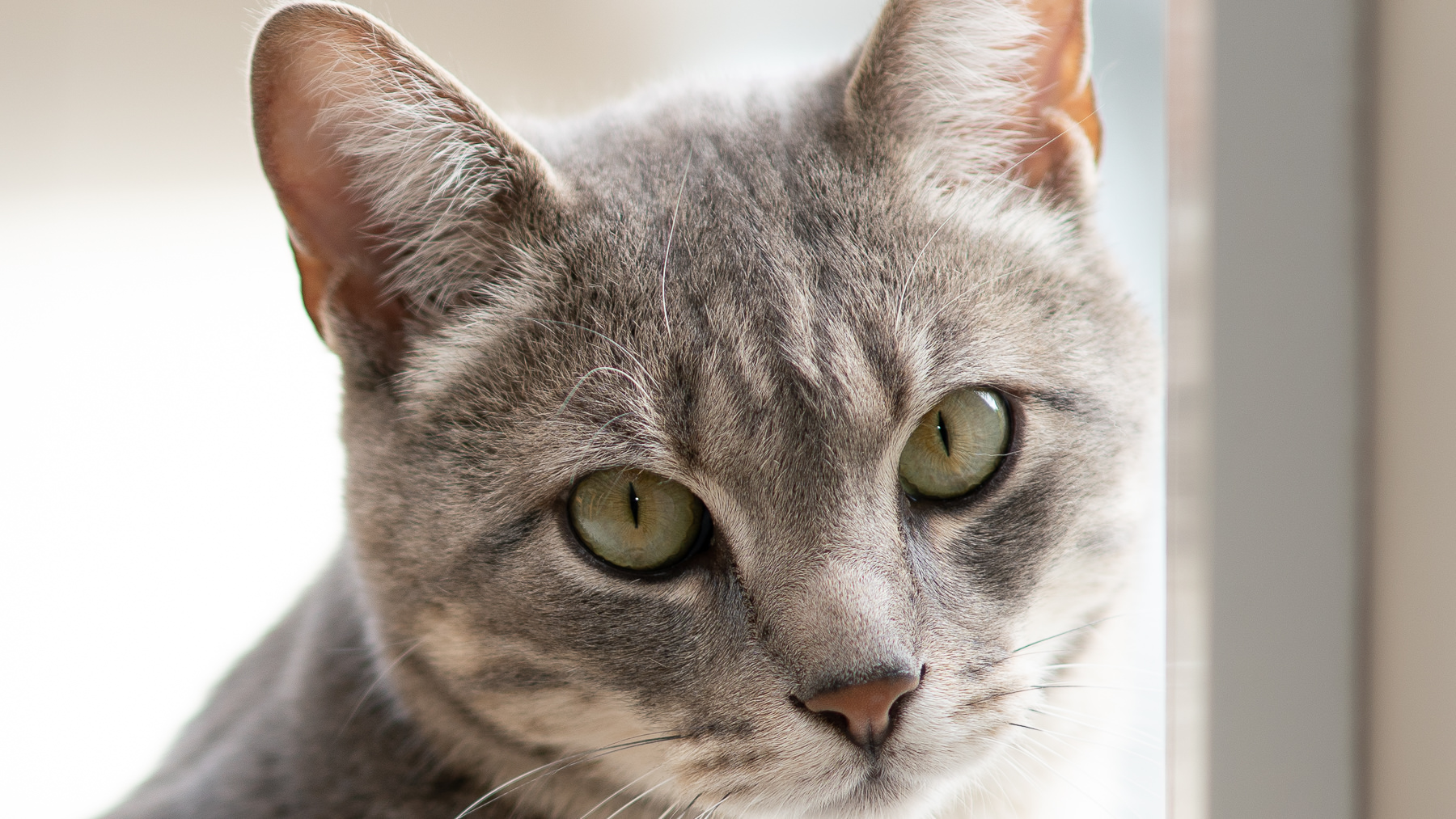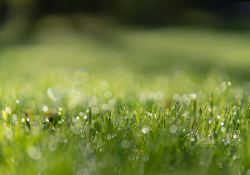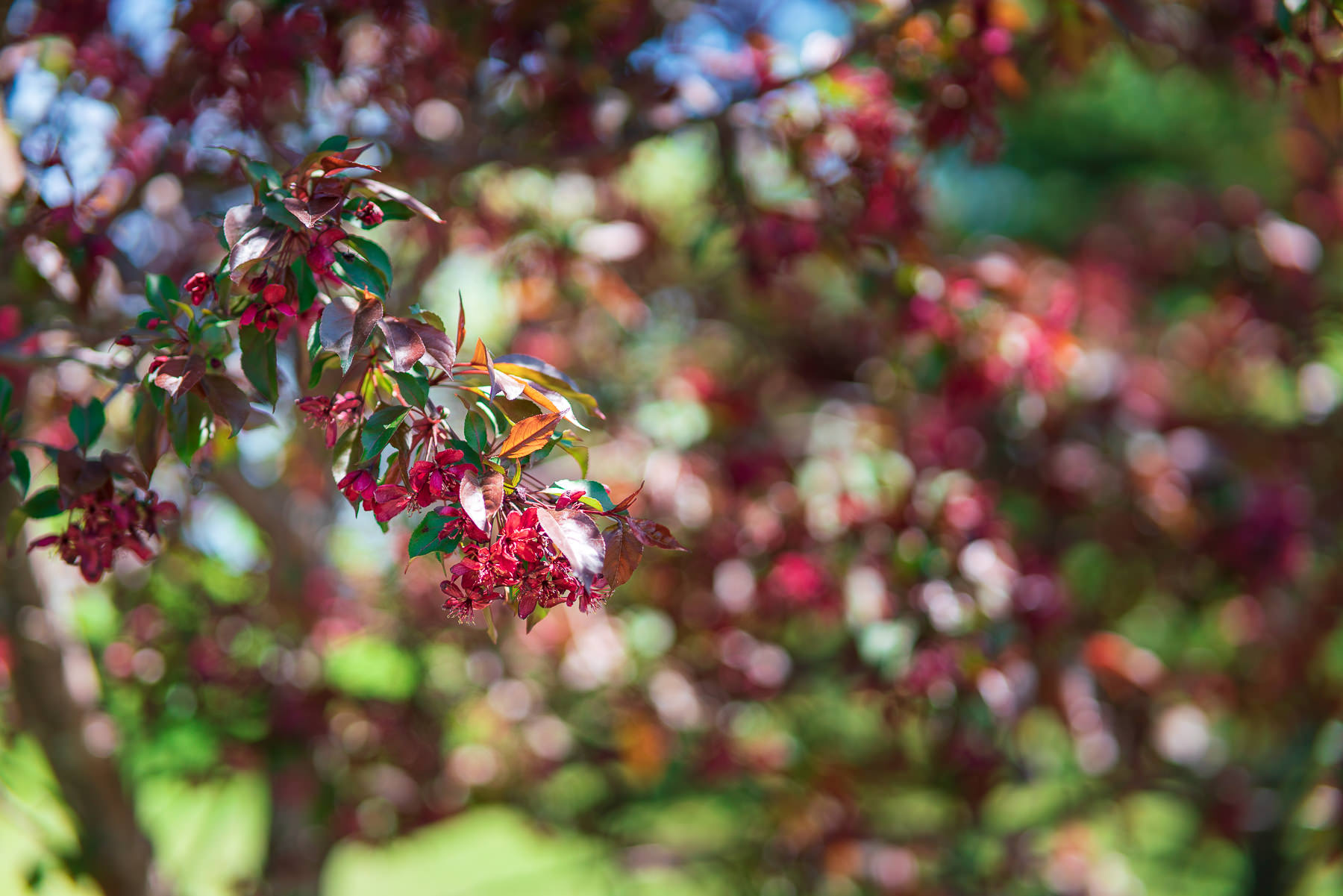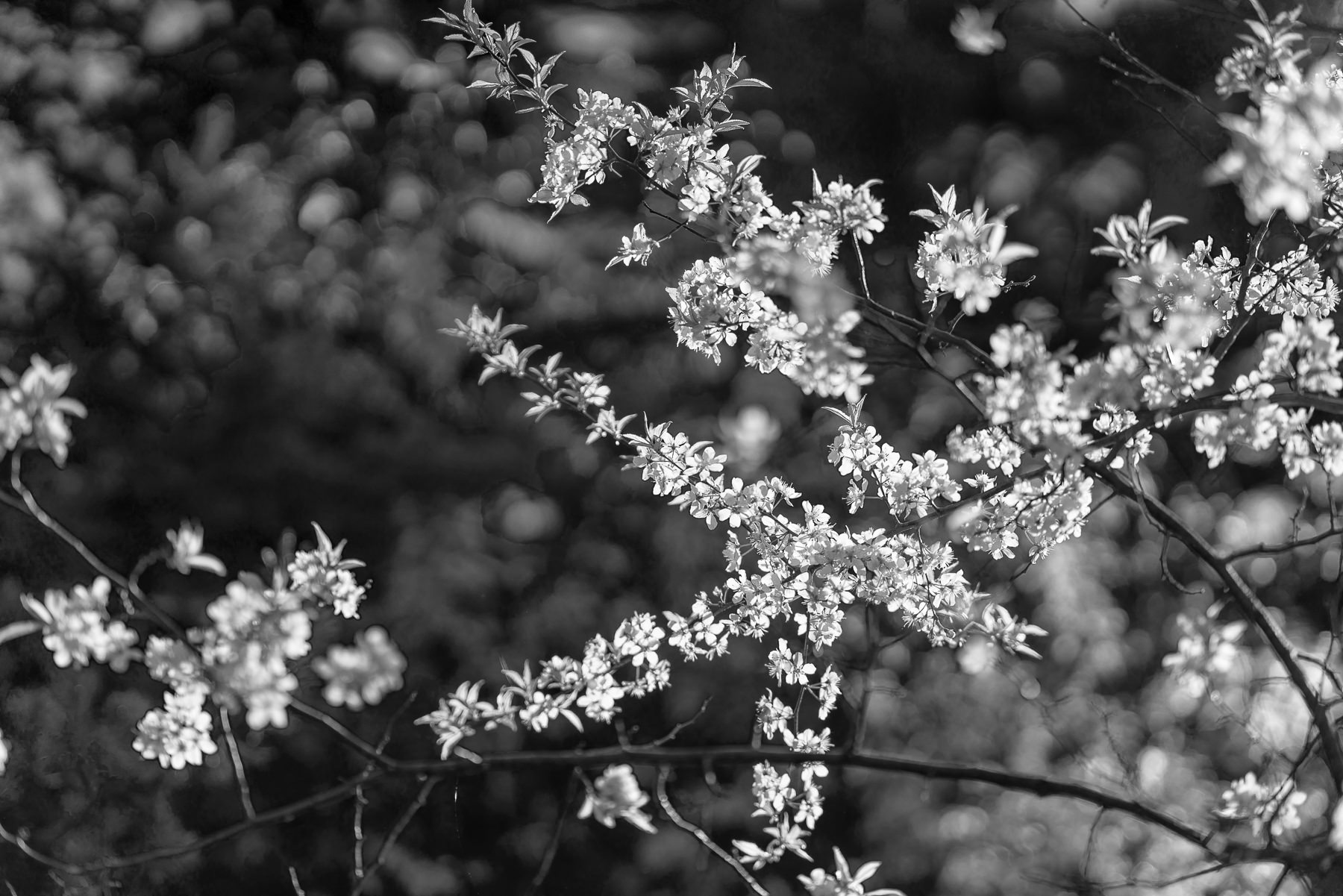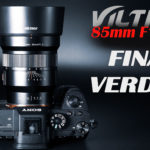The Viltrox AF 85mm F1.8 STM is the first full frame autofocus lens from Viltrox designed for Sony FE…and I’m the first reviewer in the West to get my hands on one! The 85STM sports a beautiful build quality (very premium) along with a STM autofocus system. I’ll be exploring how Viltrox has does in implementing autofocus, but my early impressions are very positive. This is the third Viltrox lens that I’ve reviewed, and I think it will be a nice option for those who want a budget (full frame) portrait lens or general purpose 85mm focal length and don’t want to pay the extra premium for the Sony FE 85mm F1.8.
Viltrox has taken the jump to developing autofocus much more quickly than most new lens makers. This may have something to do with the fact that they have been developing lens adapters for a while and have some experience with autofocus. While there are still a few kinks to work out in the autofocus, I’m very hopeful that Viltrox has the ability to continue to fine tune this performance and build on what is already a very good lens. Viltrox first released this lens for Fuji X-mount, though X-mount is APS-C only. Clearly they overdesigned the lens for APS-C, however, as this lens definitely covers the full frame image circle without issue. Interested? Read on to find out more.
Follow Me @ Patreon | My Newsletter | Instagram | Facebook | Twitter | Flickr | 500px
Prefer to watch your reviews? My thorough video review has you covered!
Viltrox 85STM Build, Handling, and Design
First of all, I continue to be impressed by how beautifully made these Viltrox lenses are. They have a fully metal construction that looks a feels a lot like a classic Zeiss lens. Check out this video to get a detailed, hands-on look the 85STM:
It’s somewhat interested to note that this autofocus version of the lens is simultaneously larger (a little larger around), adds an autofocus motor, and somehow ends up being lighter (1.4lb/636g vs 1.47lb/665g for the MF version). I can only theorize that they used slightly more lightweight materials in the design and also the difference in not having a mechanical linkage to the lens elements (the 85STM is “focus-by-wire”, meaning that input from the focus ring is routed through the lens focus motor). I measure the lens as roughly 80mm (3.15″) in diameter and 100mm (3.93″) in length. It’s worth noting that this 85mm F1.8 lens actually outweighs the new Samyang AF 85mm F1.4 for Sony FE by 70g despite that lens having a larger maximum aperture.
The overall appearance of this lens is very attractive, with an anodized metal satin finish accented by etched barrel markings in white. The lack of anything save the manual focus ring creates a very clean, timeless look that isn’t dissimilar to the Sony 85mm F1.8. There is a red badge on one side that identifies this is a DF (Digital Fullframe) lens and that it has RBW (Real Beam Waveguide) coatings (their version of multicoatings). There are no switches of any kind on the lens barrel.
As noted, this lens is “focus-by-wire”, which is typically not my preferred method of manual focus. It is worth noting here that Viltrox has done a solid job in executing the MF ring ring here. It is very large and wide and falls easily to hand. While there are no mechanical hard stops, the ring does have some damping. It moves very easily and major focus changes require several rotations of the ring. Viltrox has enabled the ability for input to be detected and the image in the viewfinder or LCD to be automatically magnified, making fine tuning focus easier. An on screen distance window also appears. The weight is of the damping is good enough that fine tuning focus is quite easy. So, while the feel of the focus action doesn’t match that of the MF version of the lens, the automatic image magnification helps the process to be more intuitive. I feel like they’ve done a very good job implementing manual focus under the circumstance.
The lens focuses internally and so the overall length does not change.
There is no manual aperture ring here as the 85STM sports an electromagnetic aperture iris that allows the iris to be controlled from within the camera body (and for the camera to choose aperture if desired). This simplifies the lens for many shooters and makes it easier to use. The lens opens the aperture fully when focusing, which allows better focus in dim lighting conditions (more on that in a moment).
What’s interesting is that while the MF version was identified as the Sony 85mm F1.8 FE in software, the 85STM actually identifies as the Zeiss Batis 85mm F1.8. This ends up being a net positive, however, as the correction profile that is applied better suits the vignette and distortion profile of the lens. I found that the Batis profile did about as good a job as I could through manual adjustments, so that’s a great bit of news.
Viltrox has wisely included a micro-USB port on the rear of the lens that will allow the 85STMto receive firmware updates. They have already proactively rolled out firmware updates for the Fuji version of this lens along with the MF lens, which, according to testers, has made a significant difference in autofocus on the Fuji version. That’s great to hear, and I have high hopes that Viltrox will smooth out some of the wrinkles on this 85STM’s autofocus on Sony as well.
Up front we find an included lens hood (plastic) and a 72mm front filter thread. Both the front pinch cap (which operates nicely) and the rear lens cap are properly branded, which I think is smart. I’ve seen some new lens makers that included generic caps, and it cheapens the experience. Viltrox has nailed a lot of the little details…including the very nice packaging.
The lens has nine rounded aperture blades, which does a pretty good job of retaining a circular shape when stopped down. Here’s an example at F4:
The lens can focus down to .8m (2.62ft), giving a maximum magnification figure of 0.125x, or roughly middle of the pack for 85mm lenses. The image quality at minimum focus is pretty good, however, with nice sharpness and fairly good contrast (the first photo represents minimum focus and the crop shows detail at F1.8).
The 85STM does not have weather sealing outside of the moisture resistant coatings on the front of the lens. All in all, however, this is a beautifully made lens that feels far, far more premium in the hand than its sub $380 USD price tag suggests.
Viltrox 85STM Autofocus
Autofocus is the area I most feared testing on this lens for the simple reason that there are lens makers like Samyang who have been designing lenses for decades and still experienced some serious growing pains in developing autofocus. In many ways the Viltrox 85mm F1.8 AF lens is about where Samyang was when I reviewed the 35mm F1.4 AF lens from them last year. That’s a lot of good, but also a few rough patches.
First of all, I was immediately impressed by the quality of the focus motor. It is both fast and quiet under most focus conditions (major focus changes in difficult light situations will slow down a bit). I was only able to hear the faintest focus whirring when I put my ear right next to the lens barrel. Very high marks for quietness, which helps create the impression of quality focus.
I was equally impressed with the Eye AF performance, which was consistently excellent with both human and pet Eye-AF on my a7R3. My portrait sessions at a variety of distances were nearly all perfectly focused without drama.
Where I ran into issues was when (surprisingly) shooting landscape images. The lens was stopped down, depth of field was much larger, but it was if the lens couldn’t settle on what to focus on and would just pulse back and forth between subject targets. Case in point here: I quickly took two photos during one of those pulses. One focused on the building (what I wanted), but the second is focused on a tree in the foreground.
What you can’t tell from still photos is that the lens (in AF-C mode) was continually pulsing back and forth between the two. AF-S/DMF modes work better in this situation, as the lens actually locks focus once it hits the target. There’s still some work to be done on this front. You will also get some more minor micro-pulsing in AF-C mode at times, though this doesn’t consistently manifest. In fact, at first I was extremely impressed with the autofocus performance, thinking they had really nailed it. The pulsing showed up in different focus situations at a later date.
Ironically the lens is often excellent when shooting at larger aperture values where depth of field is smaller. Look at how well it nailed focus in this situation:
But often in situations where, ironically, focus should be less challenging (like landscapes) where the autofocus suffered. As a portrait lens, the 85STM shines, but as a landscape lens it was sometimes infuriating. Here’s another taken during a pulse. The only thing in focus is a raindrop in the foreground!
When shooting my static video sessions I also got a little inconsistency. I shot a few segments successfully, and then I got a little random pulsing at times. The video review will show some footage where the lens is pulsing in a static shot of my yard, for example, and then performs great when shooting a little clip of my son. This lens prefers people!
Samyang has proven able to fix a lot of these type behaviors (which I definitely saw on the AF 35mm F1.4 when I reviewed it) via firmware, and I have high hopes that Viltrox will be able to do the same here (they’ve already promised they are working on it!). For the moment, however, if you shoot a lot in more challenging situations (or want to do a lot of video AF), you may want to spend the extra money for the Sony 85mm F1.8 FE. For many people, however, the Viltrox 85STM will do the trick just fine.
Note – June 28th, 2019. In mid-June, Viltrox created a firmware update for the lens that does improve on the behaviors I mentioned. There is still some minor pulsing in some situations, but it is far less extreme and less detrimental to either locking focus or achieving accurate results.
Viltrox 85STM Image Quality
Despite having the lowest price of entry into the autofocus 85mm focal length in the Sony FE universe, the Viltrox delivers a fairly strong optical performance. The best way to get the details is by watching this video, which breaks all of it down in detail and provides some comparison points:
There is definitely some vignette and pincushion distortion visible if you have the right kind of background. I noted previously that the lens identifies in software (at least in Adobe products) as the Zeiss Batis 85mm F1.8. I wasn’t able to make much of an improvement over what that correction profile achieves, and it will be automatically applied to images on import.
The end result on the right looks fairly clean. My experiments in manual correction came up with a -5 for distortion and 60/8 value on Vignette Amount/Midpoint. The latter value is interesting, as it shows that at F1.8 the vignette is moderately heavy but, more relevant, extends through a good part of the frame.
There is a mild vignette lift at F2, though the big jump comes at F2.8, so that becomes the preferred aperture if you want a shallow depth of field but no vignette.
I was interested to see if the new autofocus version behaves identically to the MF version, as they seem to share an optical formula (10 elements in 7 groups, including one ED lens). What I found is that the answer is for the most part “yes”. I did get slightly better results from the AF version, but they weren’t significant enough to be noticed without the two lenses side by side and are probably more attributable to very minor sample variation than anything else. That’s not bad news, though, as this is a very nicely sharp lens.
At F1.8 there is a strong amount of center sharpness that gradually diminishes a bit at the extreme corners (though mid-frame edges remain excellent). Contrast reduces somewhat in the extreme edges, though the vignette is the biggest enemy of extreme corner sharpness.
I found the 85STM extremely sharp for portrait work at F1.8-F2, which is further helped by the fact the lens behaves very well with Eye AF. Accurate autofocus really allows lens sharpness to be realized.
Stopping down to F2.8 allows for both higher contrast and resolution in the center of the frame along with stronger performance along the edges of the frame and a radical improvement of vignette. You’ll see CA reduction and a general uptick in image quality:
Portraits and people photos look great pretty much at any aperture. Here’s F2.5:
Color rendition is quite strong from the lens, with accurate, nicely saturated colors that are ever-so-slightly warm.
Stopping the lens down to F5.6-F8 produces high sharpness and contrast across the frame, allowing the lens to double as a nice landscape lens:
There is one other optical issue to highlight, and that is some longitudinal chromatic aberration (purple/green fringing) that shows up at wide apertures. It’s not significant, however, and, as this F2.2 photo shows, the amount of chromatic aberrations marring the image are minimal…and sharpness is excellent.
I’ve mostly seen evidence of some green fringing in bokeh areas, so you can choose to address that or not in post processing.
Bokeh quality is nice and smooth at close distances:
…but can get a little busy/nervous in the transition zone (from focus to defocus) in certain settings, like this:
There will be some “cat-eye” geometric deformation along the edges of the frame, which is pretty much par for the course with most 85mm lenses.
The 85MF is neither best nor the worst 85mm lens I’ve seen in resisting flare. It loses some contrast wide open and then shows some mild ghosting artifacts when stopped down to smaller apertures. The sunburst effect is okay though not particularly exceptional.
All in all, the flaws of the 85MF optically are pretty easy to swallow when you consider the price tag. This is not just a bargain lens; it is a solid optical performer. Here are a few more images from the lens, and, if you want to see more, take a look at the Image Gallery here.
Conclusion
It is truly remarkable how quickly the 85mm focal length has become populated with solid options on the Sony platform. There are now two 85mm F1.8 options from Viltrox (MF and AF), one 85mm F1.8 from Sony, one 85mm F1.8 from Zeiss (Batis), a MF F2.4 option from Zeiss (Loxia), an 85mm F1.4 from Samyang, an 85mm F1.4 from Sigma (ART), and an 85mm F1.4 from Sony (GM). That’s eight!!! 85mm lenses, with half of them released in the past 12 months. The Viltrox options have the distinction of being the least expensive, however, and if it weren’t for the competent and reasonably priced Sony option (you don’t often say that!), they would have an easy niche in the market. But while the Viltrox 85STM is very reasonably priced ($379 USD), optically sound, and beautifully built, there will be some who will look at the additional $200 for the Sony FE 85mm F1.8 and consider it worth it.
But I do see a market for this Viltrox lens. First of all, it produces beautiful images, and, in many situations, the autofocus works very well. For many shooters that additional $200 savings makes all the difference in the world, and the fact they you can get a very competent lens for that price makes it very rewarding. It’s encouraging to see such well-rounded budget options entering the market, and I look forward to more lenses from Viltrox in the future.
Pros:
- Beautiful build grade
- Good eye AF performance
- Fast and quiet STM motor
- Auto aperture and electronic communication
- Very good center sharpness
- Good color rendition
- Good wide open sharpness
- Nice bokeh in most situations
- USB port for firmware updates
- Fantastic price
Cons:
- Autofocus can pulse in AF-C mode in certain situations.
- Minor pincushion distortion
- Some purple and green fringing
- Fairly heavy vignette at F1.8
Purchase the Viltrox AF 85mm F1.8 STM FE @ B&H Photo | Amazon | Amazon Canada | Amazon UK | Amazon Germany | Ebay
Sony a7R III Camera: B&H Photo | Amazon | Amazon.ca | Amazon UK | Ebay
Peak Design Slide Lite: Peak Design Store | B&H Photo | Amazon | Amazon Canada | Amazon UK
Sony a6500: B&H Photo | Amazon | Amazon.ca | Amazon UK | Ebay
Peak Design Leash Strap: Peak Design Store | B&H Photo | Amazon | Amazon Canada | Amazon UK
BenQ SW271 4K Photo Editing Monitor – B&H Photo | Amazon | Amazon.ca | Amazon UK
Adobe Photoshop Creative Cloud 1-Year Subscription
Alien Skin Exposure X4 (Use Code “dustinabbott” to get 10% anything and everything)
Visit Dustin’s Amazon Storefront and see his favorite gear

Purchasing your gear through B&H and these links helps fund this website and keeps the articles coming. You can also make a donation here if you would like. Visit my Amazon page for some of my gear of choice! Thank you for your support.
Great News! I can now offer a 5% discount on all purchases at Amplis Foto, Canada’s Leading Photographic Supplier. Please enter discount code: AMPLIS52018DA in your cart. It is good for everything in your cart, and is stackable with other coupons, too! It will take 5% off your entire order! Proceeds go towards keeping this site going and providing you with new reviews!
Check me out on: My Patreon | Sign Up for My Newsletter | Instagram | Facebook | Twitter | Flickr | 500px | Google+ |
Use Code “DUSTINHDR” to get $10 off ($15 CDN) any Skylum product: Luminar, Aurora, or AirMagic
Keywords: viltrox, viltrox AF, Viltrox AF 85mm STM FE, Viltrox AF Sony, STM, viltrox 85, viltrox 85mm STM, viltrox 85 1.8, viltrox af 85 1.8 STM review, Viltrox 85mm Sony, Viltrox 85mm Fuji, Review, Dustin Abbott, FE, Viltrox AF 85mm F1.8, Viltrox 85mm F1.8 review, viltrox 85mm 1.8 review, Portrait, Sony a7RIII, Sony a7III, Bokeh, Sharpness, Resolution, Bokeh, Video Test, Sample Images, Real World



